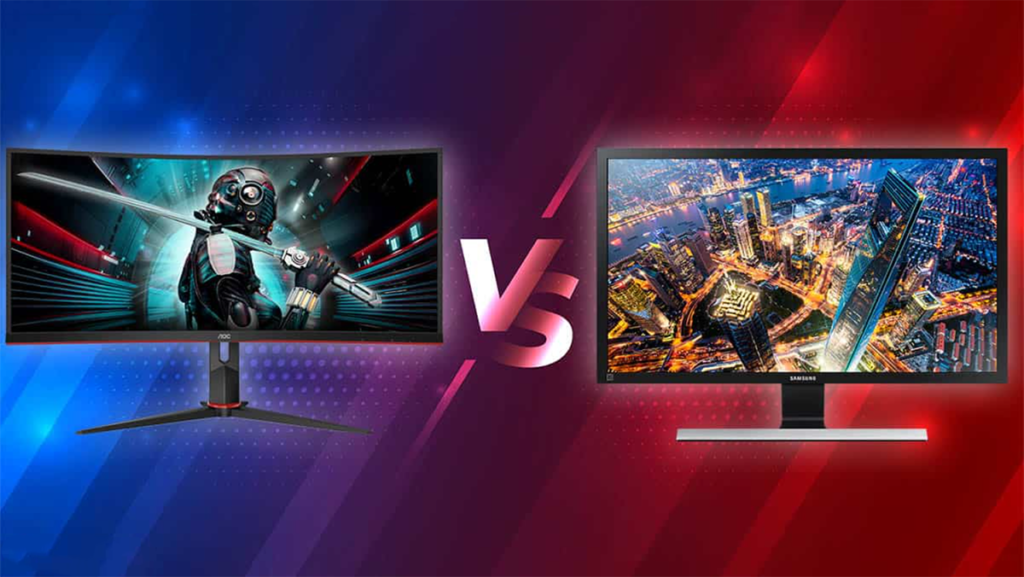When choosing a new laptop or monitor, the type of display is a crucial factor that affects the overall experience. OLED (Organic Light Emitting Diode) and AMOLED (Active Matrix Organic Light Emitting Diode) are two of the leading technologies in the market. Both offer significant advantages over traditional LCDs, but they also have distinct differences that can influence your decision. This article will delve into the detailed comparison of OLED vs. AMOLED display laptops or monitors, covering their key characteristics, advantages, and potential drawbacks.
What is OLED?
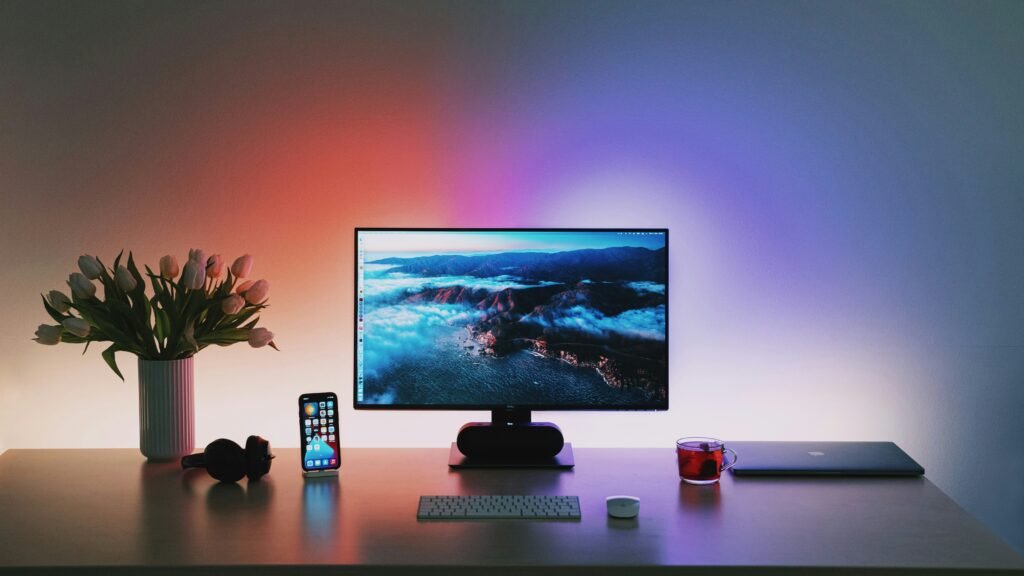
OLED stands for Organic Light Emitting Diode. This technology uses organic compounds that emit light when an electric current is applied. Each pixel in an OLED display is self-illuminating, meaning it can produce its own light and color without needing a backlight. This feature allows OLED displays to achieve true blacks and excellent contrast ratios.
Key Characteristics of OLED:
- Self-Emitting Pixels: Each pixel can turn on and off independently, providing deeper blacks and a higher contrast ratio.
- Superior Color Accuracy: OLED displays offer vibrant colors and wide color gamuts, making them ideal for tasks requiring precise color reproduction.
- Thin and Flexible: The absence of a backlight makes OLED panels thinner and more flexible, allowing for innovative design possibilities.
- Faster Response Time: OLEDs have quicker response times compared to LCDs, reducing motion blur in fast-paced content.
What is AMOLED?
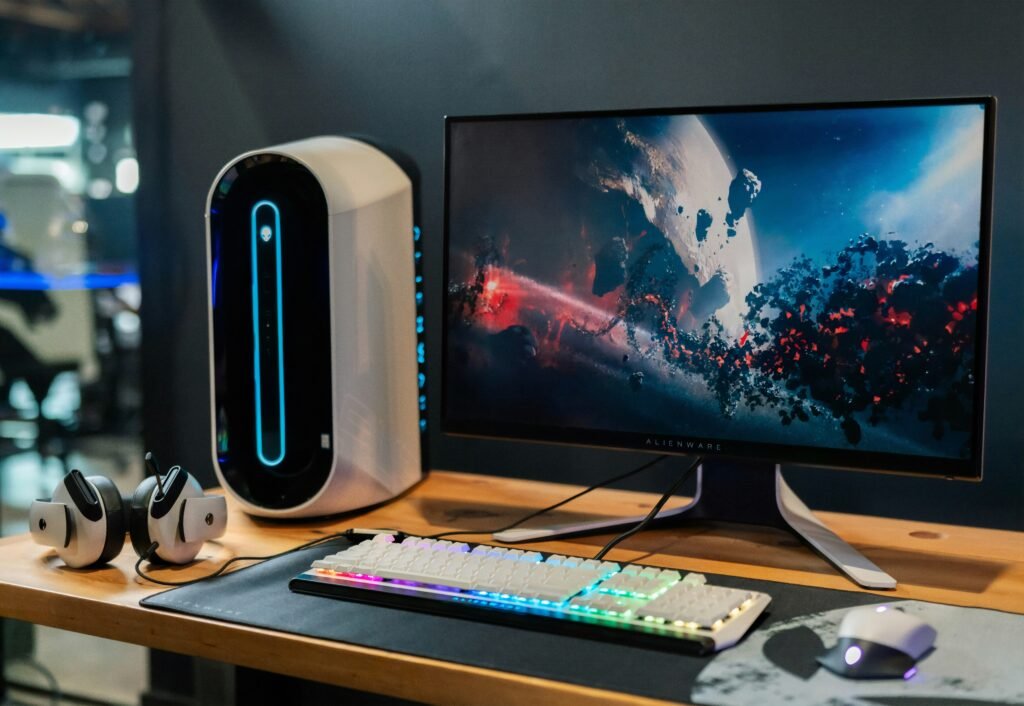
AMOLED stands for Active Matrix Organic Light Emitting Diode. It is a type of OLED display that incorporates an active matrix thin-film transistor (TFT) array to control the pixels. This active matrix technology improves the overall performance and efficiency of the display.
Key Characteristics of AMOLED:
- Active Matrix Technology: The inclusion of a TFT layer allows for more precise control of pixels, leading to better performance in terms of brightness, refresh rates, and power consumption.
- Enhanced Brightness: AMOLED displays generally offer higher brightness levels compared to standard OLED displays, making them more visible in bright environments.
- Power Efficiency: By using active matrix technology, AMOLED displays can manage power more efficiently, especially in displaying darker images where fewer pixels are illuminated.
- Durability: The TFT layer provides additional structural support, making AMOLED displays slightly more durable than their OLED counterparts.
Detailed Comparison
Color Reproduction and Accuracy:
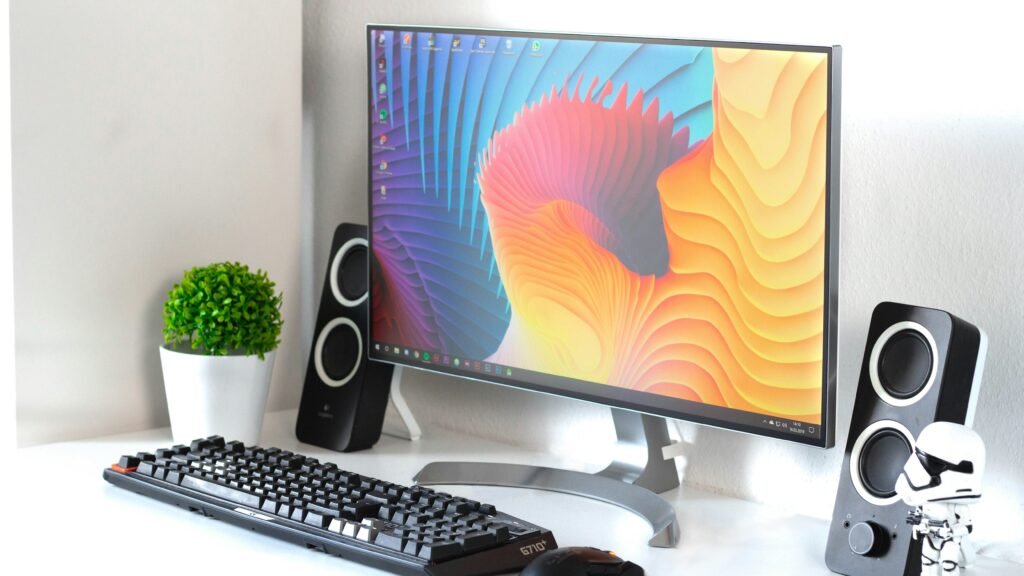
Both OLED and AMOLED displays excel in color reproduction, offering vibrant and true-to-life colors. However, AMOLED displays tend to have an edge due to their active matrix technology, which provides better control over pixel illumination. This results in slightly more accurate colors and better performance in displaying high dynamic range (HDR) content.
AMOLED displays can reproduce a broader range of colors, particularly in the blue and green spectrums, which makes them superior for displaying content that demands high color accuracy, such as professional photo and video editing. Furthermore, AMOLED’s advanced pixel control reduces the risk of color banding and allows for smoother gradients.
Contrast Ratio and Black Levels:

OLED displays are renowned for their ability to produce true blacks and infinite contrast ratios because each pixel emits its own light and can be completely turned off. AMOLED displays, being a subset of OLED, inherit this capability but often enhance it with better pixel control, resulting in even deeper blacks and higher contrast ratios.
The perfect black levels of OLED and AMOLED displays significantly improve the viewing experience in dark scenes by providing greater detail and depth. This is especially beneficial for watching movies and playing games with dark environments, where the subtle differences in shades can enhance immersion.
Brightness and Visibility:
AMOLED displays typically outperform OLED displays in terms of brightness. The active matrix technology allows AMOLED screens to achieve higher brightness levels, making them more suitable for use in brightly lit environments or outdoor settings. This increased brightness enhances visibility and makes the display more versatile in various lighting conditions.
In addition to higher peak brightness, AMOLED displays also offer better sunlight readability due to lower reflectivity. This makes them ideal for portable devices like laptops and tablets that are often used in varying lighting conditions.
Power Consumption:
OLED displays are generally more power-efficient than traditional LCDs, especially when displaying darker images or black backgrounds. AMOLED displays take this efficiency further by using the TFT array to reduce power consumption when displaying static images or dark content. This can lead to longer battery life in laptops and portable monitors. Additionally, the ability to selectively illuminate pixels on an AMOLED display can result in significant energy savings, particularly for devices with predominantly dark user interfaces.
AMOLED displays also incorporate advanced power-saving technologies like pixel dimming and variable refresh rates, which further enhance their efficiency and extend battery life in mobile devices and laptops.
Durability and Lifespan:
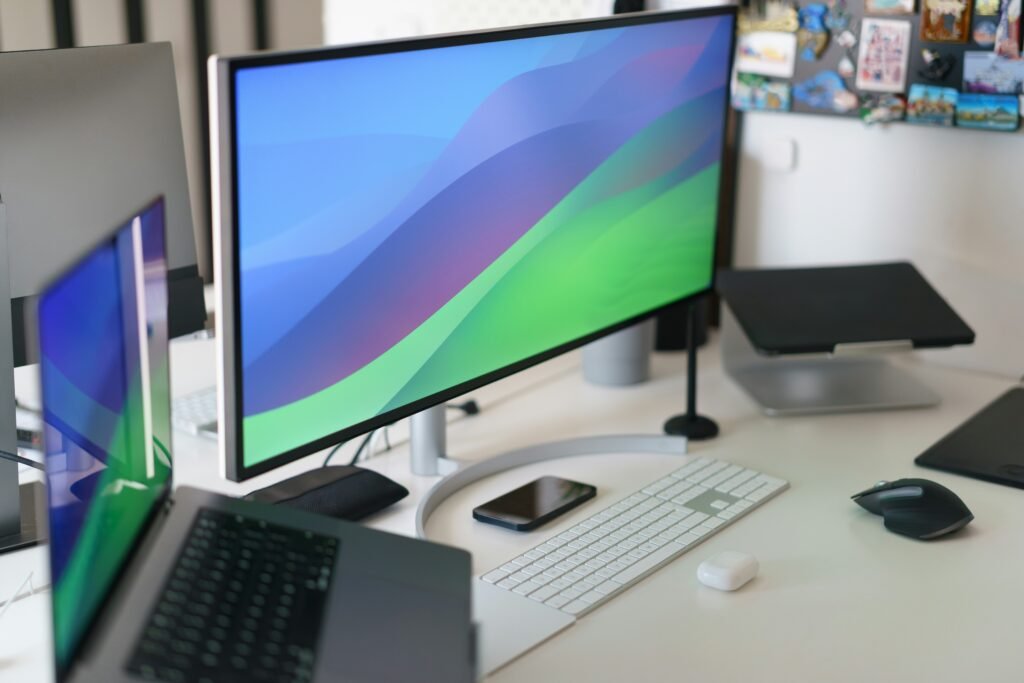
AMOLED displays, with their additional TFT layer, are generally more durable and less prone to burn-in compared to standard OLED displays. Burn-in is a phenomenon where static images can leave a permanent mark on the screen. While both OLED and AMOLED displays can suffer from burn-in, AMOLED displays tend to manage this issue better due to improved pixel control and power distribution. However, advancements in technology and software solutions, such as pixel-shifting and screen savers, have significantly mitigated burn-in issues in both types of displays.
Furthermore, AMOLED displays often feature protective layers and coatings that enhance their resistance to scratches and physical damage, making them more suitable for portable devices.
Cost:
OLED displays are typically less expensive to produce than AMOLED displays, which require additional manufacturing steps for the TFT layer. As a result, laptops and monitors with AMOLED displays are usually more expensive than those with OLED displays. However, the price difference has been decreasing as manufacturing processes improve and economies of scale are achieved. Consumers can now find more affordable AMOLED options as the technology becomes more widespread.
The cost difference is also reflected in the device segments where these displays are used. OLED displays are more common in mainstream consumer electronics, while AMOLED displays are often found in premium and high-end devices.
Applications and Availability:
OLED displays are commonly found in a wide range of devices, from smartphones and tablets to televisions and laptops. AMOLED displays are often reserved for higher-end devices where superior performance and enhanced features are necessary. Both types of displays are becoming more prevalent in the market as consumers demand better visual experiences. Notably, AMOLED displays are frequently used in flagship smartphones, premium laptops, and high-end monitors, catering to users who prioritize top-tier display quality.
The use of AMOLED displays in flagship smartphones from companies like Samsung, Apple, and Google highlights their premium nature and the emphasis on providing the best possible visual experience to consumers.
Viewing Angles:
Both OLED and AMOLED displays offer excellent viewing angles compared to traditional LCDs. The self-emissive nature of the pixels ensures that colors remain consistent and vibrant even when viewed from sharp angles. However, AMOLED displays may have a slight edge due to their superior brightness and enhanced control over pixel illumination, resulting in more uniform color and brightness distribution across the screen.
This makes both types of displays ideal for collaborative work and entertainment, where multiple viewers might be watching the screen from different angles.
Response Time and Gaming:

OLED displays are known for their fast response times, which are crucial for reducing motion blur and ghosting in fast-paced content such as gaming and action movies. AMOLED displays, with their active matrix technology, further enhance response times, making them an excellent choice for gamers and professionals who require smooth and responsive visuals. High refresh rate AMOLED displays, combined with low response times, provide an immersive and competitive gaming experience.
Many gaming laptops and monitors now feature high-refresh-rate AMOLED displays, offering smooth gameplay with minimal lag and tearing, crucial for competitive gaming.
Color Gamut and HDR:
Both OLED and AMOLED displays support wide color gamuts, which means they can display a broader range of colors compared to traditional LCDs. This capability is particularly important for HDR (High Dynamic Range) content, which requires displays to handle both very bright and very dark scenes accurately.
AMOLED displays often have a slight advantage in color gamut coverage, particularly in the DCI-P3 and Adobe RGB color spaces. This makes them preferable for professionals in the fields of photography, video production, and graphic design, where accurate color reproduction is paramount.
Innovation and Future Trends:
Both OLED and AMOLED technologies are continuously evolving. Innovations such as flexible and foldable screens are pushing the boundaries of what these displays can achieve. For instance, foldable AMOLED displays are already being used in cutting-edge smartphones and are expected to make their way into laptops and monitors in the near future.
Looking ahead, microLED technology, which combines the self-emissive properties of OLED with the durability and brightness of LED, is expected to compete with both OLED and AMOLED. However, until microLED becomes mainstream, OLED and AMOLED will continue to dominate the high-end display market.
Which is Better?
Choosing between OLED and AMOLED displays for laptops or monitors requires a deeper understanding of their specific strengths and how they align with your needs. Here are more detailed considerations to help you make an informed decision.
Performance:
- AMOLED:
- Brightness: AMOLED displays typically have higher brightness levels compared to OLED displays. This makes them more suitable for use in brightly lit environments or outdoor settings, where higher brightness can combat glare and reflections.
- Color Accuracy: While both OLED and AMOLED offer excellent color accuracy, AMOLED’s active matrix technology allows for more precise control of each pixel. This results in slightly better color accuracy and consistency, particularly in high dynamic range (HDR) content.
- Response Time: AMOLED displays generally have faster response times than OLEDs due to the active matrix’s ability to quickly switch pixels on and off. This makes AMOLED an excellent choice for gamers and professionals who need minimal motion blur and ghosting.
- OLED:
- Contrast Ratio: OLED displays are renowned for their ability to produce true blacks and infinite contrast ratios. This is because each pixel can be completely turned off, allowing for deep, rich blacks that enhance the overall image quality, especially in dark scenes.
- Color Reproduction: OLEDs offer vibrant and lifelike colors, making them ideal for tasks that require precise color reproduction, such as photo and video editing. The self-emissive nature of OLED pixels ensures that colors remain consistent even at wider viewing angles.
- Thin and Flexible Design: OLED panels are thinner and more flexible than AMOLED panels due to the lack of a backlight. This allows for innovative and sleek device designs, which can be a significant advantage in portable devices like laptops.
Cost:
- AMOLED: The additional complexity of the active matrix layer makes AMOLED displays more expensive to produce. As a result, laptops and monitors with AMOLED screens are typically positioned in the premium segment of the market. However, the higher cost is justified by the superior performance and features that AMOLED technology offers.
- OLED: OLED displays are generally more affordable than AMOLED displays, making them a popular choice for a wider range of devices. The lower production costs allow manufacturers to offer high-quality displays at competitive prices, providing excellent value for consumers.
Applications:
- AMOLED: Due to their superior brightness, color accuracy, and durability, AMOLED displays are often found in high-end devices. They are particularly popular in flagship smartphones, premium laptops, and high-performance monitors. AMOLED technology is also favored for devices that require exceptional display quality and advanced features.
- OLED: OLED displays are versatile and widely used across various consumer electronics. They are found in everything from smartphones and tablets to televisions and laptops. The affordability and excellent visual performance of OLED displays make them suitable for both consumer and professional applications.
Durability:
- AMOLED: The active matrix layer in AMOLED displays provides additional structural support, making them more durable and less prone to burn-in compared to standard OLED displays. Burn-in occurs when static images leave a permanent mark on the screen, which can be a concern for devices displaying static content for extended periods.
- OLED: While OLED displays are generally durable, they can be more susceptible to burn-in. However, advancements in technology and software solutions have significantly reduced the risk of burn-in in modern OLED displays. For most users, burn-in is not a significant issue, especially with proper use and maintenance.
Battery Life:
- AMOLED: AMOLED displays are more power-efficient, particularly when displaying dark content. The active matrix technology helps manage power consumption effectively, which can lead to longer battery life in laptops and portable monitors. This efficiency is especially beneficial for users who frequently use their devices on the go.
- OLED: OLED displays are also power-efficient, especially compared to traditional LCDs. The self-emissive pixels do not require a backlight, reducing overall power consumption. However, OLED displays can consume more power when displaying bright and vibrant images, which may affect battery life in some scenarios.
Innovation and Future Trends:
- AMOLED: AMOLED technology is at the forefront of display innovations, including flexible and foldable screens. These advancements are already being implemented in cutting-edge smartphones and are expected to become more common in laptops and monitors. AMOLED displays are also likely to continue benefiting from improvements in brightness, power efficiency, and durability.
- OLED: OLED technology continues to evolve, with ongoing improvements in color accuracy, contrast ratios, and overall display quality. Innovations such as transparent and rollable OLED screens are expanding the possibilities for new device designs and applications. While OLED may not incorporate the latest features as quickly as AMOLED, it remains a strong contender in the display market.
Wide Color Gamut and HDR:
- AMOLED: The active matrix technology in AMOLED displays allows for a broader color gamut and better HDR performance. This means AMOLED screens can reproduce a wider range of colors and handle bright and dark scenes more effectively, making them ideal for content creators and media consumption.
- OLED: OLED displays also support wide color gamuts and HDR, providing excellent visual experiences. The ability to produce true blacks and vibrant colors enhances the overall quality of HDR content. OLED displays are well-suited for users who prioritize color accuracy and contrast in their viewing experience.
Which is Better?
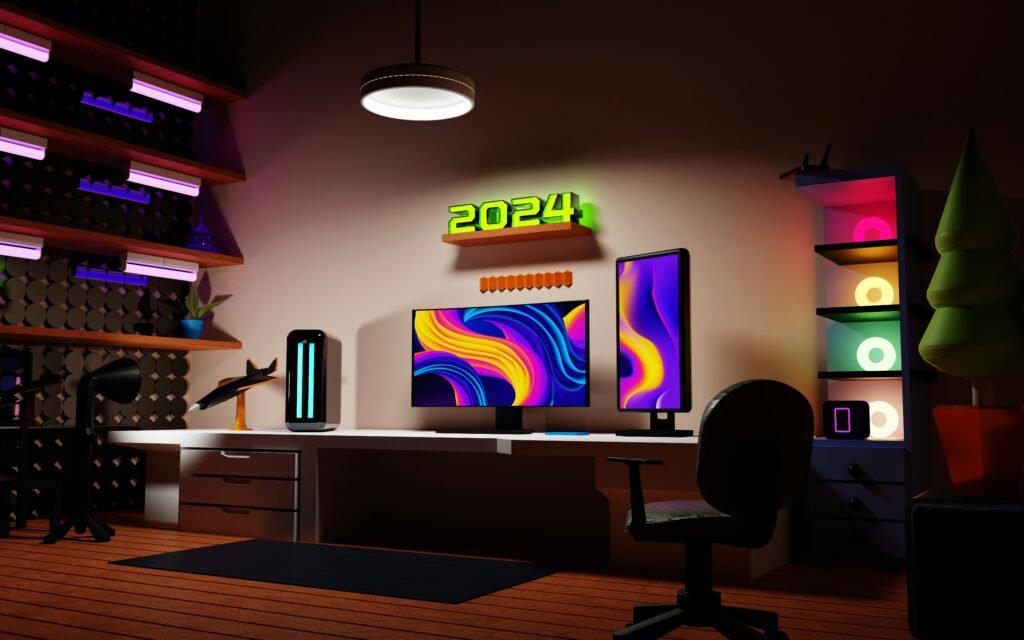
Ultimately, the choice between OLED and AMOLED displays depends on your specific needs, preferences, and budget. Here’s a summarized comparison to help you decide:
Choose AMOLED If:
- You need a display with higher brightness and better visibility in bright environments.
- You prioritize superior color accuracy and HDR performance.
- You are willing to invest in a premium display with advanced features and enhanced durability.
- You require a fast response time for gaming or professional use.
Choose OLED If:
- You seek excellent contrast ratios and true blacks for an immersive viewing experience.
- You need vibrant color reproduction for tasks like photo and video editing.
- You prefer a thinner and more flexible display design.
- You are looking for a more affordable option that still offers high-quality visuals.
In conclusion, both OLED and AMOLED displays offer exceptional visual experiences, but their suitability varies based on individual requirements. If performance, brightness, and durability are your top priorities, and you don’t mind paying a premium, AMOLED displays are the better choice. On the other hand, if you value excellent color accuracy, contrast, and affordability, OLED displays provide an outstanding option. Consider your specific use case, budget, and desired features to make the best decision for your next laptop or monitor purchase.
Conclusion
Choosing between OLED and AMOLED displays for laptops or monitors depends on your specific needs and preferences. OLED displays offer excellent color accuracy, true blacks, and high contrast ratios, making them ideal for media consumption and professional content creation. AMOLED displays, with their superior brightness, power efficiency, durability, and enhanced pixel control, provide an enhanced viewing experience, particularly in challenging lighting conditions.
If you prioritize the absolute best in display technology and are willing to pay a premium, AMOLED is the way to go. However, if you want excellent performance at a more affordable price, OLED displays will still deliver an impressive visual experience. As both technologies continue to evolve, the gap between them is likely to narrow, providing even more options for consumers seeking top-tier display quality in their laptops and monitors. Ultimately, the choice between OLED and AMOLED will come down to your specific use case, budget, and desired features, ensuring you get the best possible display for your needs.
